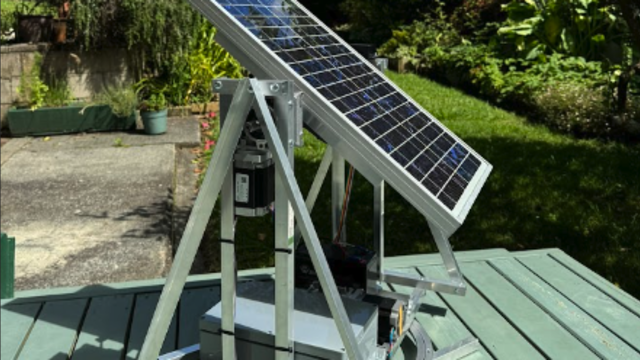Dremel drill press
Maker: Johnny Bai
Project link: hsmag.cc/ISHxum

So, you have a Dremel and now you need a drill-press to mount it on. You can either get one from the hardware store, or follow Johnny Bai’s lead and build one yourself using PVC pipes at a fraction of the cost. He begins by fixing his Dremel 4000 on one side of a 5”× 6” board with two 1.5” conduit clamps, before gluing a PVC bush and a small pipe on the other. He then uses several tees and pipes to assemble the base frame. The process isn’t cumbersome thanks to the self-explanatory pictures.
After preparing the base, he attaches the 20” and 11” PVC pipes for the Dremel to slide on. Before putting in the springs that he’s sourced from a 4” sprinkler body, Johnny suggests you sand them a bit for a fluid movement. Now come the real cumbersome bits: creating parts for the slide section, the handle support, and the handle slides requires a lot of cutting, sanding, and gluing. As a bonus, he’s also created a rubber stopper and a plug that can be used to fasten the Dremel at one point. This enables him to use the Dremel to do some routing and sanding tasks.
Hydroponic unit
Maker: Nathan Williams
Project Link hsmag.cc/3mBiLA

Nathan Williams has been interested in hydroponics since even before he was old enough to understand what was really involved in that kind of farming. A software engineer by profession, he first dabbled with hydroponics farming by growing a chilli plant. Buoyed by its success, Nathan decided to build himself a proper hydroponic garden with PVC pipes and some other bits. He uses recycled materials, including old PVC pipes, an old wooden baby’s crib, and other miscellaneous junk, but you might have to source them from the hardware store.
You’ll also need a small submersible pump (Nathan uses an 18 W one), and some plastic cups for your plants. The construction is fairly easy to replicate, thanks again to Nathan’s explanations and detailed photographs of the process. He begins by making holes for the cups in the PVC pipes using a drill and a Dremel. Nathan suggests you space the cups depending on what you plan to grow in them. You’ll have to follow his instructions to then prepare the cups, and how to run a hose through the PVC caps before fastening them at the end of the pipes.
If you don’t mind putting in the effort, take a look at Paul Langdon’s IoT-enabled hydroponic farm (hsmag.cc/MfFIUC).
Book/tablet holder
Maker: Specific Love Creations
Project Link hsmag.cc/jUdi5b

While you can easily find an inexpensive stand for a book or a tablet in the market, it wouldn’t come close to the PVC Man. It requires 15 pipes of three different lengths and some endcaps, elbows, and other connectors. Assembling the stand is pretty straightforward, and takes less than a minute once you have assembled and laid out all the components. While you can use a baseball or a light bulb as the head, PVC Man uses a specially assembled head that gives it a robot-like appearance.
The head has its own set of components that again can just be pressed into each other. Besides holding a book or a tablet, you can reconfigure it with ease to strike different poses. The intrepid maker behind Specific Love Creations enjoys tinkering with PVC, and has an exhaustive list of PVC projects and life hacks (hsmag.cc/i11um0).
Camera stabiliser
Maker: Justin Derato
Project link: hsmag.cc/onMp2A

When Justin Derato was out looking for a stabiliser for his DSLR, he couldn’t find one within his budget. So, like any good DIYer, he decided to build himself one with PVC pipes. His hack isn’t just cost-effective, but is designed so that it can be held with either or both the hands, and can produce relatively stable images even when used while running, or riding a bike.
Like all builds this month, Justin’s bill of materials is quite extensive as well. The assembly involves measuring, sawing, hacking, sanding, and gluing the various components, but Justin has explained and photographed the steps in great detail. He suggests you take your time through each step, to make sure you get it right before moving on to the next one. To give you a feel for the contraption, Justin has also included a test video shot using his stabiliser.






